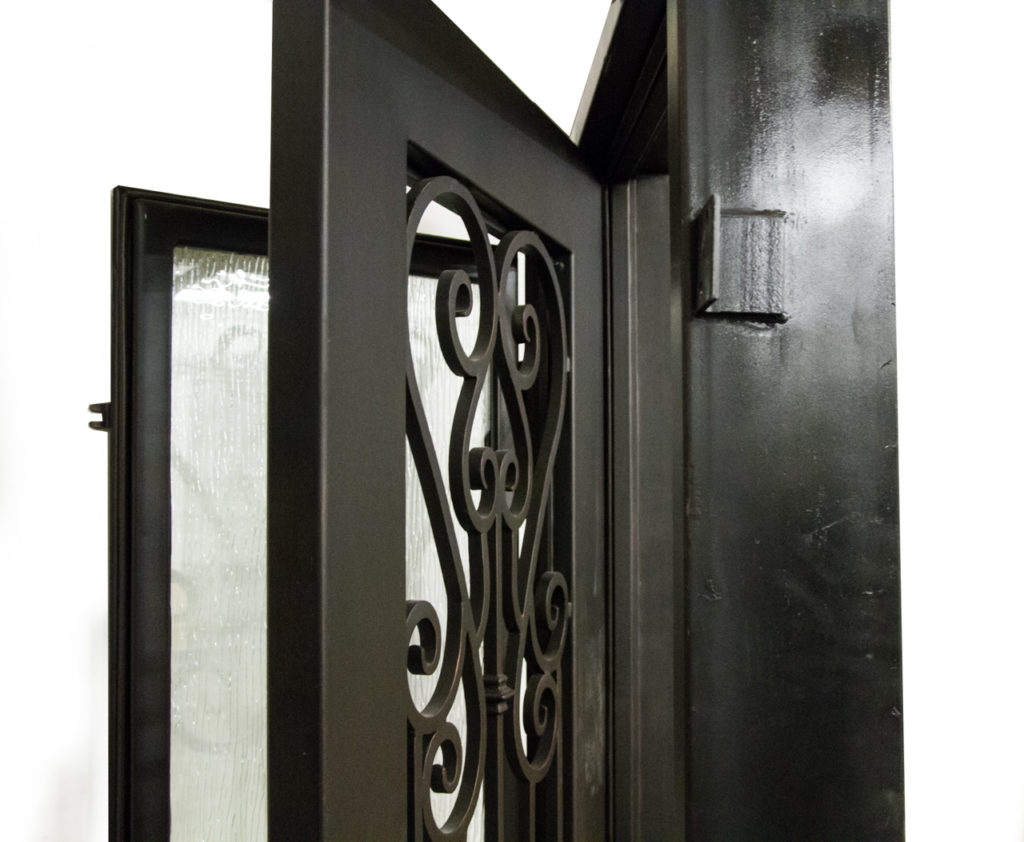
For many lovers of an ultra-modern front entryway as well as those who love added, lasting security, metal doors are an exceptional option. As one of the fastest growing segments of the door industry, one might say that exterior metal doors are flying off the shelves… but do everyday consumers know how to care for them once they’ve been installed? Likely not, and one of the biggest areas of common wear and tear for metal doors is their paint.
We all know a fresh coat of paint can bring any old door back to life, but in the case of metal doors, paint is also essential for keeping out rust-causing oxidation common in the most humid parts of the world. Likewise, a coat of the right kind of paint on an exterior metal door saves these high-traffic entryways from everyday kicks, scuffs, scratches, and blows that might otherwise do permanent harm to the metal itself. If you own or plan to own a metal door, knowing how to paint one will be one of the essential DIY skills in your toolkit.
Setting the Stage: Metal Door Painting Prep
It’s important to understand that while you work on painting your metal door, it will not be on its hinges—in fact, for the duration of the time it takes you to paint the door and for the door to dry completely, the entryway where this door hangs will be wide open. For this reason, it’s important to pick a time for this project when you plan on being home for 48–72 hours to ensure the safety of your home and family. Better still, if you have a lockable screen door in the same entryway, make every use of it.
Coming Unhinged: Removing Your Metal Door and Getting It Paint-Ready
Before you start digging into removing your metal door from its hinges, have a clean, dust-free area set up with two sawhorses in place—this is where you’ll get the work of painting done. Placing a plastic drop cloth beneath your sawhorses is a wise choice to keep paint spatter off your garage or workroom floor. Once you have removed the door from its hinges, carefully remove the doorknobs or handles and any other hardware carefully so as not to scratch it. Set all door hardware aside in an area where it won’t be damaged or get any paint on it. If there is hardware or embellishments that are not removable on your metal door, cover them entirely with painter’s tape.
Getting Gritty: Removing Old or Loose Paint
After putting on your safety goggles and mask, use a sander with super-fine grit sandpaper to remove the old layer of paint or stubborn, straggling pieces of paint. This is also the time for you to remove by hand any aging weatherstripping (which you can replace after the paint on your door has dried entirely.) Once you have completed all sanding, go over the door on both sides with your hand to ensure there are no rough spots. Go around the edges of the door with your hands to feel for any leftover sticky residue from weatherstripping—if there is any, you can use a simple solvent or mineral spirits to remove it. Once all of this is done, give both sides of the metal door and its edges a good once-over with a clean, dry rag to remove any small debris. You’re ready to paint!
Choosing Your Paint and Your Tools
For any door that faces an exterior, you must use exterior paint. You can choose from semi-gloss to glossy, or even a matte paint if that’s to your taste, but ensure that it is a paint intended to face the elements of the outdoor world day in and day out. Even the most adept painter using the finest exterior paint will tell you that you’re going to need to apply two coats to both sides of your metal door for your paint job to stand up to the test of time; be prepared for this, and for the time you will need to wait for the first coat to dry before applying the next.
The painting tools you will need will depend on the type of metal door you have: a flush door or a panel door. Most metal doors are flush, which means they are entirely flat on both sides. To paint these doors, all you need is a small roller—simply roll the paint on, wait for the coat to dry, roll on the next coat. For those who want to really get into every nook and cranny of the door’s edges, a small hand brush will do the trick just fine. On the other hand, if you have a metal door that has panels, you will need brush small enough to paint inside the panels as well as an extra small roller to roll paint vertically across the areas between the panels of the door. Be sure to use all vertical strokes to ensure the paint dries evenly.
“Finishing” Thoughts
As stated above, be sure you wait until the paint is entirely dry before reapplying your hardware and before rehanging the door in its frame. When you follow these steps correctly, your newly painted exterior metal door will be the color you want, it will be protected from the elements and from traffic, and best of all, won’t need a new coat of paint for another two decades!


